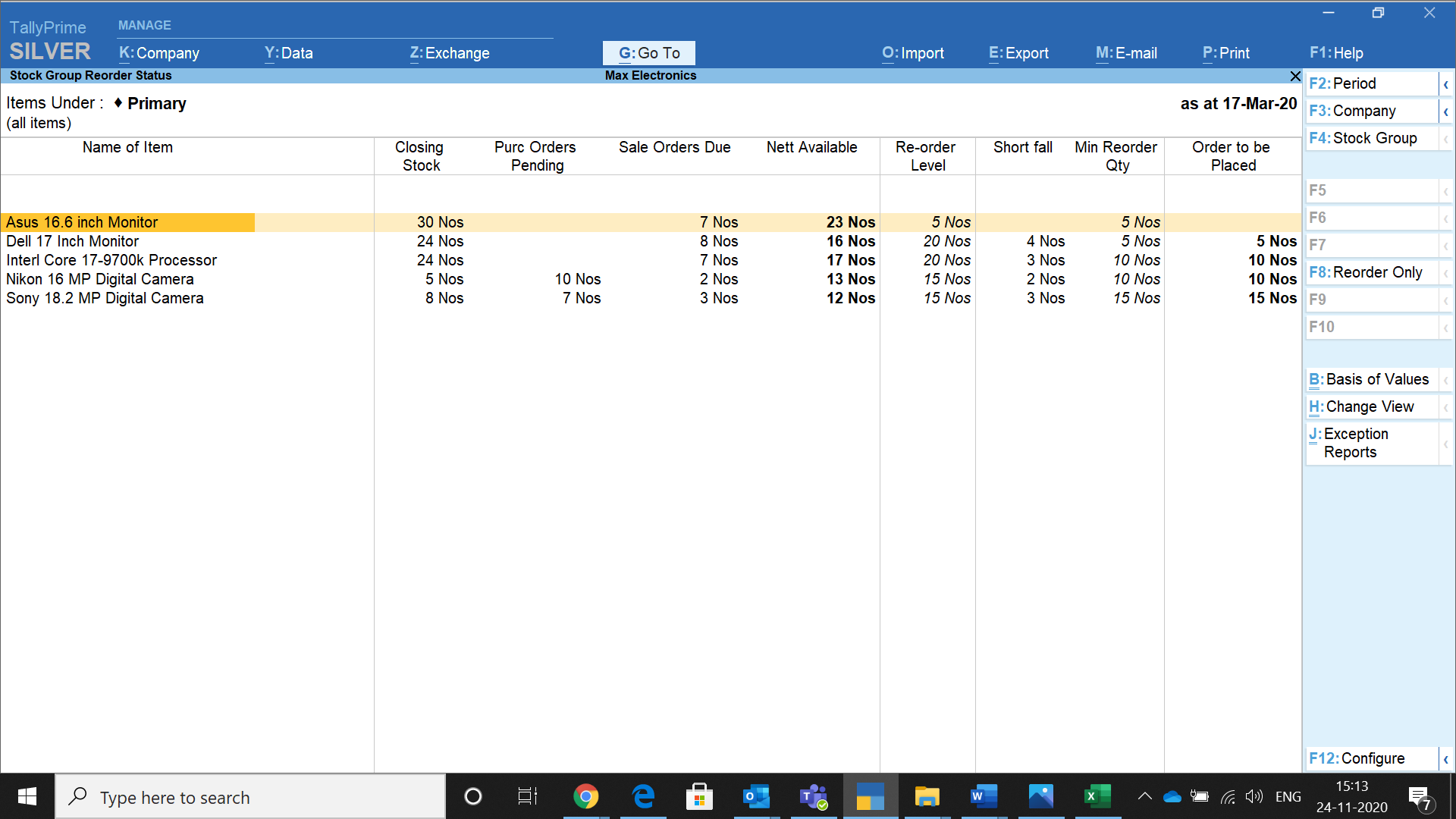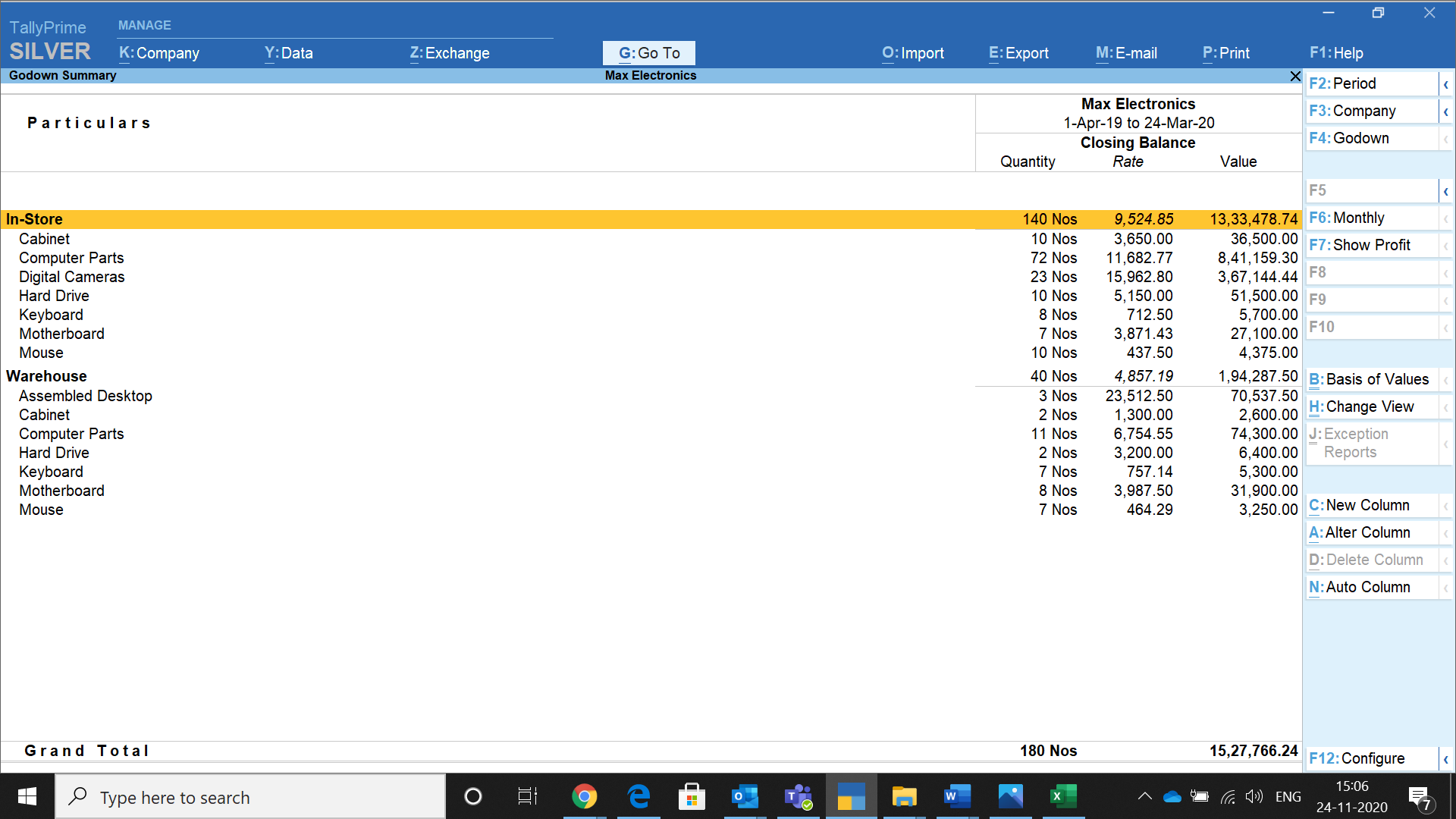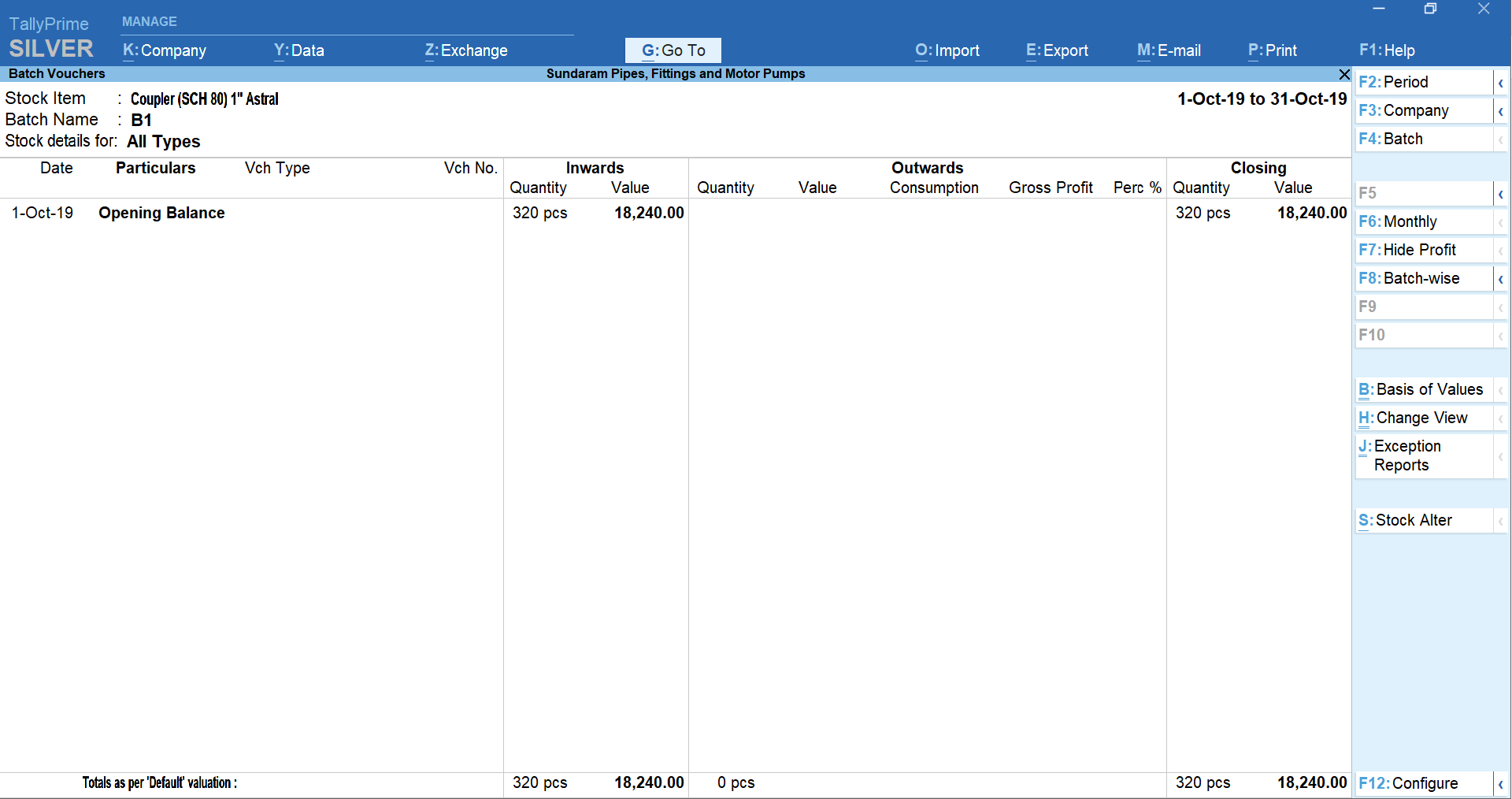What is store management software?
Does your business involve stock items or inventory in the day-to-day transactions? If so, you certainly need to manage and keep track of all your stocks – how much of them have been sold every day, what is the balance stock, are the stocks moving as per the demand, do you have too much unused stock and so on.
Keeping a close watch on the closing stock and regular inventory audit will enable business owners run their company more efficiently. A sound store management software does just that. Formerly known as Storeroom Management Software or Stockroom Management Software, a core management software helps you keep supply and consumption levels at an optimum rate regularly. This functionality in a business management software comes in handy when you are dealing with multiple line of products and have different locations where the stock is lying. Thus, it is safe to say that the primary aim of this software is to ensure that there is adequate stock in the concerned place, when required.
Why does a business owner require a store management software?
Several times, you must have noticed that a retail shopkeeper may have difficulty in keeping a track of the stock-at-hand and stock levels at a certain location. It becomes quite tedious to manage this manually on a daily basis since it would require checking every single inventory available in the storeroom. It is not feasible for the store manager to physically go and check if certain items are available when in immediate demand. This could lead to dead stock, piling up in the storeroom, without the store manager having any clue about the same.
An automated process to manage this unwanted situation, would not only ease the store manager’s life but also improve business efficiency. With a constant check on the stock items available in the storeroom, the shop manager can easily cater to the demands of the purchaser. Since the store manager is aware of the purchase requirements and the available stock, it will also help him keep the business owner updated about the demand and supply of the products they are dealing with.
What are the features of a store management software?
While choosing a store management software for your business, you must keep the following things in mind:
-
How adaptable is it with your business requirements?
There have been instances where an SMB owner may have opted for a software to manage his business processes, but eventually as the business grows, the software is unable to adapt with the changes. This happens because ‘software exceptions’ do not allow the business owner to manage business the way they want to. Adaptability being the key in a business management software, the technology which you opt for, must be flexible enough to cater to your business’ growing needs. With a diverse set of reports available in a software, it could be confusing for the user to get insights into the stock you manage. Thus, your store management software must help you to customise and view the required reports, the way you want.
-
How easy and simple is it to use?
Considering an increased demand in the simplistic design and user-friendly interface, it is imperative that your storeroom software lets you explore all the built-in capabilities, seamlessly. One of the major roadblocks which business owners face while automating their processes is that they find the software too complex. Thus, given the nature of a software, it is imperative that its features are simple yet intuitive, so that any user can access it, effortlessly.
-
Will it be accessible from anywhere at any time?
Remote working is the latest trend and almost every business has already adopted this change in a major way. Your store management software must have the capability to be operated from anywhere and at any given point. Whatever data/report you wish to access, your software must be “connected” enough to give you the required information right where you are. Not just that, but apart from being able to access these reports online from anywhere, you should also be able to print them for your reference without any disruptions.
What are the benefits of a store management software?
A store management software has several benefits. Let’s take a look at each one of them and how they will increase your business operations even more.
-
Purchase planning
With an automated process to manage your stock levels, you get a clear view of the demand and supply of your products. This will not only help your store manager plan your purchase by viewing various MIS reports, easily, but also will give a solid grip on sudden and over purchase. Hence you refrain from unnecessary spends, thus saving money.
-
Maintain reorder levels
It is important that a business maintains enough stocks to meet customer needs, at any point of time. This also means that it is important not to accumulate stocks that don't sell. With a store management software, you can easily maintain optimum levels of the stock’s quantity by defining reorder levels. This way you will always be able to meet customer’s demands and never run of stocks. Re-order level report in TallyPrime!

-
Stock at multiple locations
In your business, you may be managing the inventory in multiple physical locations, such as shops, warehouses, bins, racks, cabinets, and so on. With a store management software, you can keep a track of your stock stored at multiple locations. Since your reports can be easily accessed from anywhere, you can control the operations without any hassles irrespective of your physical location. Check out how stock at multiple locations can be managed seamlessly in TallyPrime.

-
Keep track of perishable/expired goods
One of the most common mistakes store managers commit is, keeping expired products on the racks. This is not only alarming to a consumer but could also lead to legal repercussions. A store management software will let you identify the movement of the inventory in batches or lots. Many businesses also purchase in lots to monitor the lots purchased individually. With the help of a store management software, you can easily track these perishable goods which could impact your business in a huge way. The software will also help in ageing analysis that will let you track age of the various stock items, as older stock may depreciate or become obsolete, and result in a loss. This way you can plan to sell before it’s too late.

Keeping your inventory levels at check could make/break your business. It is ultimately a business owner’s call to choose a software that would benefit his/her business not just temporarily but in the long run. So, why don’t you give TallyPrime a try now and see how it will help you manage your inventory in the best way possible?
Frequently asked questions
How to choose the best store management software?
While choosing a store management software for your business, you must keep the following things in mind:
- How adaptable is it with your business requirements?
- How easy and simple is it to use?
- Will it be accessible from anywhere at any time?
What is the process of store management?
Store management ensures that all activities that are involved in storekeeping/godown management and stock control are carried out efficiently and economically by the respective individual. Maintaining optimum stock levels based on the inflow and outflow of goods from the store, is what store management is all about.
How can a store management system be improved?
Store management system can be improved by implementing a software system, so that the store personnel has a complete view of the stock-in-hand vs the demand. An automated process will help keep a constant check on the stock items available in the storeroom, the shop manager can easily cater to the demands of the purchaser. Since the store manager is aware of the purchase requirements and the available stock, it will also help him keep the business owner updated about the demand and supply of the products they are dealing with.
How store management software will help retail stores?
Store management software will help retail stores in the following ways:
- Purchase planning
- Maintaining reorder levels
- Tracking stock at multiple locations
- Keep track of perishable/expired goods
How do retail stores manage inventory?
The following are the different types of inventory control methods used by the business.
- ABC analysis
- Just in time (JIT)
- Economic order quantity (EOQ)
- Fast, slow, and non-moving (FSN)
Read more: Inventory Control – Definition, Objectives, Methods and Steps











